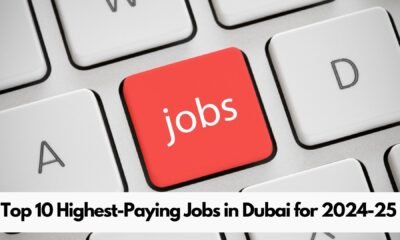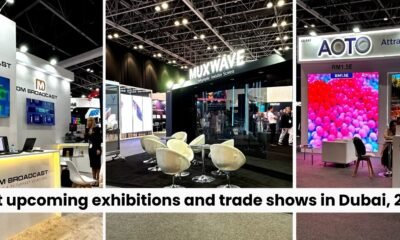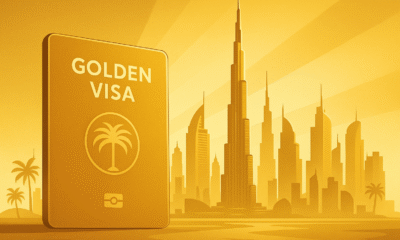Blog
How Can an Exhibition Stand Design Company in Oman Boost My Booth?
Introduction to exhibition stand construction
Exhibition environments demand a blend of creativity, engineering, and logistical precision. When a company decides to showcase its products at a trade show, the physical space becomes a storytelling platform. Understanding the process behind stand creation helps brands set realistic expectations and collaborate effectively with specialists. This article explores the stages of planning, design, fabrication, and installation, with particular attention to the nuances that arise in the Gulf region.
Key stages of a successful exhibition stand project
1. Defining objectives and target audience
Before any drawings are drafted, it is essential to clarify the purpose of the stand. Are the goals focused on lead generation, brand awareness, product demonstration, or a combination of these? Identifying the target audience shapes the messaging, visual language, and interactive elements that will be incorporated.
2. Site analysis and space allocation
Each exhibition venue provides a floor plan with specific dimensions, utilities, and traffic flow patterns. Analyzing the allotted space allows designers to maximize visibility while adhering to safety regulations. Considerations include ceiling height, column placement, and proximity to high‑traffic zones.
3. Concept development and visual storytelling
Creative teams translate brand values into three‑dimensional concepts. Mood boards, material samples, and digital renderings help stakeholders visualize the final outcome. This phase often involves multiple iterations to align aesthetics with functional requirements such as storage, lighting, and visitor flow.
4. Technical design and engineering
Once a concept is approved, engineers produce detailed construction drawings. These documents specify structural supports, load‑bearing capacities, and compliance with local building codes. Accurate engineering ensures that the stand can be assembled quickly and safely on site.
5. Material selection and sustainability
Choosing the right materials influences both visual impact and environmental footprint. Recyclable aluminum frames, modular panel systems, and low‑VOC finishes are popular choices for eco‑conscious exhibitors. Sustainable sourcing not only reduces waste but also resonates with increasingly green‑focused audiences.
6. Fabrication and quality control
Fabricators follow the engineering drawings to produce each component. Quality control checkpoints verify dimensions, finish quality, and hardware integrity. Precision at this stage minimizes delays during on‑site assembly.
7. Logistics, shipping, and on‑site installation
Coordinating transportation of stand components requires careful planning. Packing lists, crate specifications, and customs documentation are essential for international exhibitions. On the day of the event, experienced crews assemble the structure, connect electrical systems, and test audiovisual equipment.
8. Post‑event dismantling and storage
After the exhibition concludes, the stand is disassembled, inspected for damage, and packed for return or storage. Efficient dismantling reduces labor costs and prepares the stand for future reuse, extending its lifespan and delivering long‑term value.
Choosing the right partner for exhibition stand projects
Selecting a reputable builder involves evaluating several criteria. Experience in the specific market, a portfolio of similar projects, and the ability to manage complex logistics are critical factors. Companies that demonstrate a collaborative approach and transparent communication tend to deliver smoother experiences.
Experience with regional exhibitions
Builders familiar with the regulatory environment and cultural expectations of Gulf exhibitions can navigate permits and design preferences more effectively. Their local knowledge often translates into cost savings and reduced lead times.
Design expertise and innovation
A strong design team stays abreast of emerging trends such as immersive digital experiences, interactive touchscreens, and kinetic architecture. Innovation helps exhibitors stand out in crowded halls and create memorable brand interactions.
Project management capabilities
Effective project managers coordinate designers, engineers, fabricators, and installers. They maintain schedules, monitor budgets, and ensure that each milestone is met without compromising quality.
Client references and case studies
Reviewing past work provides insight into a builder’s reliability and creative range. Testimonials from previous clients can highlight strengths such as punctual delivery, problem‑solving skills, and attention to detail.
Local considerations for exhibition stands in Oman
Oman hosts a variety of trade shows ranging from oil and gas conferences to tourism expos. Climate conditions, such as high temperatures and occasional sandstorms, influence material choices and structural design. Incorporating robust sealing and ventilation systems helps protect equipment and maintain visitor comfort.
Regulatory compliance
Exhibitors must adhere to the Oman Ministry of Commerce’s regulations regarding temporary structures. This includes fire safety standards, load limits, and accessibility requirements. Engaging a builder who understands these rules simplifies the approval process.
Cultural sensitivity in design
Design elements that reflect Omani heritage, such as traditional patterns or locally sourced textures, can enhance audience connection. However, it is important to balance cultural motifs with contemporary branding to maintain a professional image.
Logistical challenges
Transportation infrastructure in Oman varies by region. Selecting a builder with established relationships with local freight forwarders ensures that stand components arrive on schedule and in good condition.
Emerging trends shaping exhibition stands
Technology continues to transform how brands engage visitors. Augmented reality (AR) overlays, holographic displays, and real‑time data analytics are becoming integral to modern stands. Additionally, modular designs enable rapid reconfiguration for multiple events, reducing waste and cost.
Interactive experiences
Touch‑enabled surfaces and gamified stations encourage visitor participation, extending dwell time and improving lead capture. These elements should be integrated early in the design phase to ensure seamless functionality.
Sustainable construction
Eco‑friendly materials and carbon‑offset initiatives are increasingly demanded by exhibitors and venue operators alike. Builders that prioritize recyclability and energy‑efficient lighting contribute to a greener exhibition ecosystem.
Hybrid physical‑digital environments
Post‑pandemic expectations include virtual components that complement physical booths. Live streaming, QR‑code integrations, and digital content hubs extend the reach of an exhibition beyond the venue’s walls.
Budgeting and cost‑effective strategies
While high‑impact stands can command significant investment, there are ways to achieve strong visual presence within tighter budgets. Reusing modular components, opting for lightweight materials, and focusing on strategic lighting can reduce expenses without sacrificing quality.
Cost breakdown overview
Typical cost categories include design fees, engineering, fabrication, shipping, installation, and on‑site services such as electricity and internet. Understanding each element helps exhibitors allocate resources wisely.
Value of early planning
Initiating the design process well in advance allows for price negotiations, material sourcing, and contingency planning. Early engagement with a builder can prevent last‑minute changes that often increase costs.
Leveraging sponsorships and partnerships
Collaborating with technology providers or material suppliers can offset certain expenses. Sponsors may supply equipment or branding opportunities in exchange for visibility within the stand.
Case study: effective stand execution without compromising quality
One regional energy company partnered with a seasoned builder to create a compact yet striking booth for a major trade show in Muscat. By selecting a modular aluminum frame, incorporating LED lighting, and using recycled graphics panels, the company achieved a modern look while staying within budget. The builder coordinated shipping, on‑site assembly, and post‑event storage, delivering a seamless experience.
How to evaluate proposals from exhibition stand builders
When reviewing bids, compare scope of work, timeline, and material specifications. Request detailed cost breakdowns and ask for clarification on any ambiguous terms. A transparent proposal demonstrates professionalism and reduces the risk of unexpected expenses.
Key questions to ask
- What is the estimated timeline from concept approval to final installation?
- Which materials are recommended for durability in the local climate?
- How does the builder handle customs clearance and on‑site logistics?
- What post‑event services are included, such as dismantling and storage?
Choosing the right specialist for your next exhibition
Finding a builder that aligns with brand goals and logistical needs is essential for a successful exhibition presence. Below are five anchor keywords that link to reputable providers, each offering distinct strengths in the Omani market.
Exhibition stand builders in Oman provide comprehensive services from concept to completion, ensuring that every design element reflects the client’s vision while meeting local regulations.
For projects that require meticulous coordination of multiple subcontractors, Exhibition stand contractors in Oman bring extensive experience in large‑scale installations and complex logistics.
When a brand seeks a partner with a strong creative portfolio, Exhibition stand design company in Oman offers innovative concepts that integrate technology and sustainable materials.
Companies focused on interactive visitor experiences often turn to an Exhibition booth design company in Oman that specializes in digital integrations, immersive lighting, and modular configurations.
For clients who prioritize efficient build processes and reliable on‑site assembly, an Exhibition booth builder in Oman delivers precise fabrication and swift installation, reducing downtime during the event.
Conclusion
Understanding the full lifecycle of exhibition stand creation empowers brands to make informed decisions and collaborate effectively with specialists. From initial concept through post‑event storage, each phase contributes to a cohesive and impactful presence on the trade show floor. By selecting experienced partners and embracing emerging trends, exhibitors can enhance audience engagement and achieve their marketing objectives. As the industry continues to evolve, staying aware of local nuances and sustainable practices will remain key to success, especially for initiatives centered around Stands Bay.
Blog
Looking for a GCS Crypto Currency Licence and Registration in Dubai?

Looking for a GCS Crypto Currency Licence and Registration in Dubai?
Welcome to our guide on Crypto currency license in Dubai. At GCS, we specialize in providing top-quality Crypto currency license services to meet your needs.
Why Choose Our Crypto currency license Services?
Our team of experienced professionals understands the importance of quality Crypto currency license in Dubai. We pride ourselves on delivering exceptional results and customer satisfaction.
Our Approach to Crypto currency license
We take a comprehensive approach to Crypto currency license, ensuring that every aspect of our service meets the highest standards. Our process includes:
- Thorough consultation to understand your specific needs
- Customized solutions tailored to your situation
- Ongoing support throughout the process
- Transparent communication at every step
Important Resources
For more information about Crypto currency license, check out these valuable resources:
- Crypto Currency Licence in Dubai
- Dubai Crypto Currency Licence
- Crypto Currency Registration in Dubai
- Dubai Crypto Currency Registration
- GCS Crypto Currency Licence in Dubai
Get Started Today
Ready to experience the difference our Crypto currency license services can make? Contact GCS today to schedule your consultation. Our team is standing by to answer your questions and help you get started on the path to success.
Don’t wait – reach out to us today and discover why so many people in Dubai trust GCS for their Crypto currency license needs.
Blog
Best Crypto currency license Services in Dubai

Best Crypto currency license Services in Dubai
Welcome to our guide on Crypto currency license in Dubai. At GCS, we specialize in providing top-quality Crypto currency license services to meet your needs.
Why Choose Our Crypto currency license Services?
Our team of experienced professionals understands the importance of quality Crypto currency license in Dubai. We pride ourselves on delivering exceptional results and customer satisfaction.
Our Approach to Crypto currency license
We take a comprehensive approach to Crypto currency license, ensuring that every aspect of our service meets the highest standards. Our process includes:
- Thorough consultation to understand your specific needs
- Customized solutions tailored to your situation
- Ongoing support throughout the process
- Transparent communication at every step
Important Resources
For more information about Crypto currency license, check out these valuable resources:
- Crypto Currency Licence in Dubai
- Dubai Crypto Currency Licence
- Crypto Currency Registration in Dubai
- Dubai Crypto Currency Registration
- GCS Crypto Currency Licence in Dubai
Get Started Today
Ready to experience the difference our Crypto currency license services can make? Contact GCS today to schedule your consultation. Our team is standing by to answer your questions and help you get started on the path to success.
Don’t wait – reach out to us today and discover why so many people in Dubai trust GCS for their Crypto currency license needs.
Blog
Dubai 2025: The Tech Revolution Unveiled – From Smart Cities to AI‑Driven Innovation
Dubai has always been a city that looks toward the future. From its iconic skyline to its ambitious plans for sustainability, the spirit of innovation is woven into every project. In 2025, the city is stepping into a new era where technology is not just a tool but a living system that powers everyday life, reshaping how residents work, travel, shop and connect.
1. The Birth of a Smart City
When most people think of a smart city, images of connected traffic lights, billboards that update in real time, and drones delivering packages come to mind. Dubai’s journey began with the Smart Dubai programme, which set out to create a city where digital services are delivered more efficiently and transparently. The programme’s core goals were:
- Digital identity for citizens and residents.
- Integrated data platform for city services.
- Smart infrastructure that adapts to real‑time needs.
- Encouragement of start‑ups and tech investment.
These pillars laid the groundwork for a city that can react to the needs of its people instantly, making daily life smoother and more rewarding. This foundation also helped launch a wave of projects that pushed Dubai ahead of the global curve.
2. Artificial Intelligence Takes the Driver’s Seat
Artificial Intelligence (AI) has become the engine behind many of Dubai’s newest achievements. From predictive policing that helps keep streets safe to AI‑powered logistics that reduce delivery times, the technology is changing every sector.
Transportation and Mobility
The Dubai Metro’s robots now run maintenance checks without human intervention. Autonomous buses navigate the sidewalks, delivering passengers between business districts with minimal delays.
Healthcare Revolution
AI algorithms predict potential health risks based on lifestyle and genetic data, allowing doctors to intervene early. Virtual consultations powered by AI chatbots provide instant medical advice, freeing up specialists for complex cases.
Public Safety and Law Enforcement
Machine‑learning models detect unusual crowd movements and highlight potential security threats before they grow. Law‑enforcement drones patrol the city, ensuring that emergency response is swift and efficient.
By embedding AI into everyday services, Dubai turns its metropolis into a responsive organism that learns and grows with its people.
3. Blockchain: The Invisible Ledger of Modern Life
While blockchain has made headlines in finance, its real power lies in its transparency and security. Dubai has leveraged the technology to create tamper‑proof systems across government, healthcare, and logistics.
One notable example is the Digital Health Pass—an immutable record that tracks vaccination, medical history, and health alerts. Similarly, property transactions are recorded on a blockchain, cutting down paperwork and fraud while speeding up closing times.
These applications not only add value for the government but also provide a sense of trust for residents and investors alike.
4. The Architecture of Tomorrow: Smart Skyscrapers and Infrastructure
Dubai’s skyline is home to more than just office space; it is a living laboratory for sustainable design. Buildings now incorporate:
- Energy Harvesting Windows: Transparent solar panels that provide electricity to the building’s systems.
- Responsive Facades: Skin that adjusts to sunlight and temperature, keeping interiors comfortable while lowering energy usage.
- Water Recycling Systems: On‑site purification that reduces municipal water demand.
These features not only reduce carbon footprints but also lower operational costs, making high‑rise living accessible to a wider audience.
5. Technology Hubs and the Start‑up Ecosystem
The city’s growth is driven partly by its vibrant ecosystem for technology start‑ups. Numerous incubators provide mentorship, financing, and access to venture capital. Key areas of focus include:
- FinTech solutions simplifying banking for the cloud‑native generation.
- EdTech platforms that bring personalized learning to anyone on the move.
- HealthTech that integrates wearable data with AI diagnostics.
- Supply chain technology creating end‑to‑end traceability.
Dubai’s open data initiatives give start‑ups a wealth of information—making it easier to test and scale products that fit the local market and can also export worldwide.
6. The Human Touch: Building Tech Culture
Innovation is only as good as the people behind it. Dubai invests heavily in human capital: from schools teaching coding from kindergarten to higher‑education programmes that put AI and blockchain at the forefront.
Workshops lead residents to create their own mini‑projects, giving them a sense of ownership over the urban digital narrative. These efforts foster a public appetite for technology, ensuring that the next wave of ideas will come from diverse voices.
7. Looking Ahead: What Lies Beyond 2025?
The ambition never stops. While 2025 has delivered massive strides, the sights are now set on a more interconnected yet sustainable system.
- Zero‑carbon buildings enabled by nanomaterials.
- Hyper‑fast transport links into the desert, turning islands into bustling hubs.
- Advanced AI that helps residents live healthier lifestyles by predicting needs.
- Fully autonomous commercial districts where order and efficiency thrive.
These future projects are based on data collected in real time, meaning the city can adapt quickly to changing aspirations.
Dubai’s transformation demonstrates how creating a digital ecosystem, backed by supportive policy, can accelerate progress for all residents and set a global example for future city planning.
Want to read more about how Dubai is turning skyscrapers into AI hubs? Explore our story on skyscraper AI transformation.
Curious how the city’s smart system uses AI and blockchain to improve everyday life? Dive into the pulse of Dubai’s tech evolution.
Still wondering how visionary dreams turned into a reality of smart cities and AI? Discover the journey of Dubai’s tech pulse.
-

 Business2 years ago
Business2 years agoTop 10 Highest-Paying Jobs in Dubai for 2024-25
-

 Business2 years ago
Business2 years agoTop 10 Business Opportunities in Dubai for 2024-2025
-

 Business2 years ago
Business2 years agoBest upcoming exhibitions and trade shows in Dubai, 2024
-

 Business1 year ago
Business1 year agoHow Much Does It Cost to Open a Company in Dubai in 2024?
-

 Sports2 years ago
Sports2 years agoTop 5 Upcoming International Sporting Events in Dubai (2024-2025)
-

 Blog2 years ago
Blog2 years agoPlaces to Visit in Ras Al Khaimah
-

 Latest4 months ago
Latest4 months agoDubai Golden Visa 2025: Everything You Need to Know About Eligibility, Benefits and Application Process
-

 Business2 years ago
Business2 years agoTop 5 Networking Events for Businesses in Dubai in 2024



